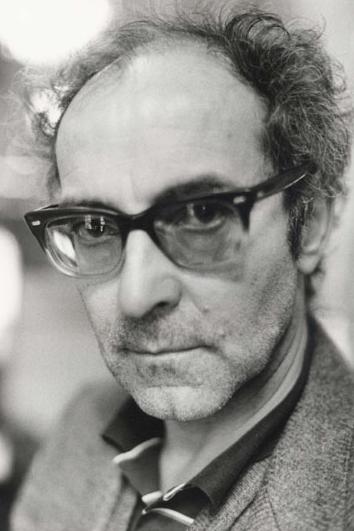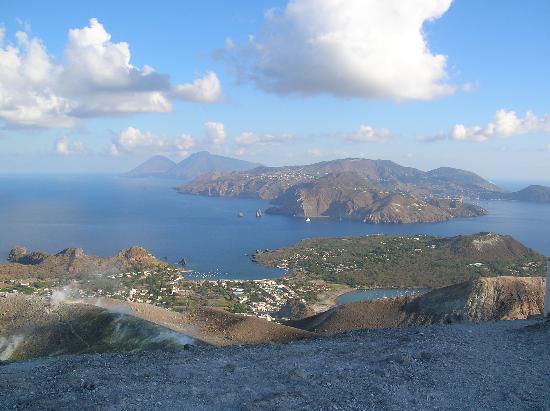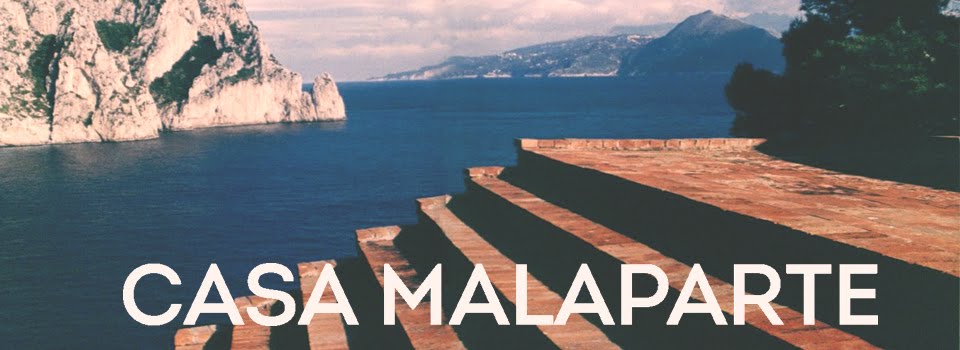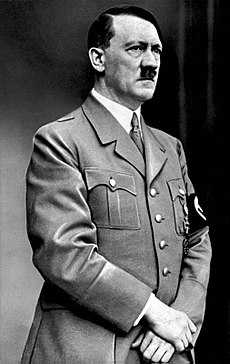Movie Reviews of "Le Mépris"
Casa Malaparte was brought into fame even more so when "Le Mépris" (Contempt) was filmed inside and outside of this building. It bought interest and curiosity internationally and shared a lot more of its hidden qualities throughout the film.
 |
| Jean-Luc Goddard |
Contempt is a french film directed by Jean-Luc Goddard in 1963. Jean-Luc Goddard was born on December 3rd in 1930. Jean-Luc Goddard is a very influential director and famously challenged many traditional cinema production. Many of his works questions the existence, ridiculousness, of people often found in other historical films.
(Source : Bio - True Story )
Contempt is a film based on an Italian novel called, Il Disprezzo (A Ghost at Noon). This film is described as a reputable classic among French films, it has a relaxed pace and a beautiful soundtrack. It is recognized as a tragic love story while still being among the classic re-watches and many agree that Contempt is one of Jean-Luc Goddard's best works. As Casa Malaparte is a reflection of Curzio Malaparte, in the same way is Contempt a reflection of Jean-Luc Goddard. Contempt is about a woman, played by Brigitte Bardot, falling out of love with her husband, played by Michel Piccoli. While Jean-Luc Goddard did not have this problem, he did, however, encounter the alternative main problem of this film, which was the examination of the film maker within the world of commercial cinema. (Source: International Cinema Review ) Below is a trailer for Contempt, and already one can hear the reputable sound track as well as see the main characters that star in this film.
The main actress, Brigette Bardot was born on the 28th of September in 1934. She is an animal rights activist, a former actress, model, singer of France. During the 1950s-60s, she was known as a sex-symbol. She retired from the entertainment industry in 1973, but by then she had already build up a impressive, and well-known repertoire of films, records, musicals and much more. Today, she remains an animal rights activist. (Source : IMDb )
Michel Piccoli, the main starring man, is still active within the entertainment industry, starring in a recent movie this year, and two others with small roles. He is well known to diversify his roles, from seducer, to villain, to hero. Piccoli was born on the 27th of December in 1925 in Paris. (Source: IMDb )
Contempt, overall, is recognized as a must-watch film, thus, obviously, with Casa Malaparte being one of its main settings, the group of Red 2 decided that it is vital to understand this building and we must understand its reputation to others, therefore, upon watching this film, the following are our reviews....
_________________________________________________________________
Jean-Luc Godard's film, Le Mepris (Contempt), based on the novel by Alberto Moravia, is haunting, beautiful, and an allusive look at commercial film-making. He expresses what it means to sell out and comprise personal ethics while touching on themes of love, marriage, mythology, and the integrity of an artist. The mainly European flick has an atmosphere paced by a slow narrative, as the audience watches a marriage between two characters gradually fall apart.
The architecture featured in the masterpiece is nearly as impressive as the performances by the main cast.
Set along the coast of Capri, Casa Malaparte (by architect, Curzio Malaparte) emerges near the end of the film as the home of American producer, Jeremiah Prokosch. The multiple long, panning shots remain fixed on the building giving the audience time to take in its beauty, location, soon realizing that it's situated on the edge of a cliff.
The wedge shaped residence looks a little outrageous resting at the top of the cliffside overlooking the Mediterranean. However, the environment is almost perfect; the characters engage in conversations, adultery, and conflict as waves crash around them against the beautiful backdrop of the Italian Amalfi coast.
Goddard shows us an image of wealth in the 1960's using semi-big stars, and a big budget. Le Mepris is emotionally stirring and a powerful work, earning Goddard well deserved praise.
_________________________________________________________________
This 1963 french movie, "Le Mépris", is a captivating film of a deteriorating marriage between two who seemed so apparently in love. It is interesting to see the slow paced yet quick in retrospect the rubble of a once intense and strong love relationship. Meanwhile this film accomplishes itself as a commercial success as well as able to demonstrate two main points; the meditation of life and a critique of the film making industry.
In addition, the colour theme throughout the movie remained a constant and pleasent intention, and is obvious in the very first, famous, scenes with Bardot naked, playfully chattering with Piccoli. It switches from red filters to blue filter and back to red, intentionally. These colours are seen throughout the film, with furniture, clothing, and environment.
The nature of the script of "Le Mépris" was sometimes confusing as it jumps from point to point, often referring back to previous statements that seemed unimportant at the time. The running streams of thought are often broken and referred back to later which causes unsteady rhythm through out the film, yet it seems to add to the character of the film. The imagery, words, and tones convey very much of the film and many phrases were repeatedly reenacted. For example, "C'est la vie" was said by Camille in multiple situations and it established the main point of the film quite clearly.
The Camera work of the film provided elegance and smoothness to the film, and I particularly enjoyed the brief moments of stillness in the beautiful surrounds, especially near Casa Malaparte. There are many scenes where the entire landscape is visible and is breathtaking how beautiful it is, and helpful to notice the scale of human and nature. Casa Malaparte in this french film was revealed in ways that never would have been known to those inaccessible to it, and ultimately "Le Mépris" is the source of Casa Malaparte's popularity in pop culture and recognition.
Through this film, we were able to gather information of scale, colour, and views of location of Casa Malaparte and this enough is sufficient to say that "Le Mépris" by Jean - Luc Goddard is a worthwhile watch.
Literature of Curzio Malaparte
Many of Curzio Malaparte's writing were powerful, controversial, and strongly opinionated. There were also many that remains short stories, and poetry of his life; these types of literature are classics translated to many languages and are read and reread by many. On the other hand, articles and political entries were often the source of Malaparte's arrest, exiles, and troubles with the government. Particularly, The Technique of Coup d'Etat, written in 1932. This book informs readers on how to overthrow a government successfully as he critiques his way through the many leaders like Hitler and Mussolini (picture below, left and right, respectively).

Logically, the publication of this novel results in six years of internal exile and arrests. This publication is now very rare to find and difficult to locate but fortunately, chapters translated by Sylvia Saunders are available online. Specifically offensive in this novel, is Malaparte's constant referral to Hitler as a woman:
In the history of European countries it is Germany’s turn now: Hitler is the dictator, the “woman” Germany deserves. The feminine side of him explains Hitler’s success, his domination of the crowd and the enthusiasm he rouses in the youth of Germany.
Mussolini is apparent in other chapters as well and Malaparte is just as harsh and critical as he is with Hitler. Malaparte's ability to combine casual candor and fictional candor is a blurred line, as the information and analysis become one. He writes his novel as if an autobiography, imparting the feelings, and describing the surrounding as he had felt it. Overall, this novel of political history is as much captivating as it is controversial in its opinions.
 |
| Head of a Greyhound, right profile: Antonio Puccio Pisano (Pisanello) (c. 1395-c.1455), 15th c. (Musée du Louvre, Paris) |
Other literature that Malaparte has composed are sometimes more lighthearted and less controversial. For instance, he writes of "An Aeolian Greyhound", an excerpt from "La Pelle" (The Skin) of 1949 , it is a personal account of his life. He begins with his setting, which takes place in the winter of 1940 as he sought refuge in a deserted house in a deserted city of Pisa. He explains, genuinely, he had done so to escape from war and men, and to cure himself of sickness which the war had imparted on his heart. Already, in the beginning of this short account is his emotions, feelings, and life. He writes, heartbreakingly, about Febo, his dog, a greyhound, whom he had nutured, saved, and had become his sole companion during his lonely times in Lipari:
I have never loved a woman, a brother, a friend, so much as I loved Febo. (. . . ) His coat was the color of the moon, between pink and gold; it was the color of moonlight on the sea, the color of moonlight on the dark leaves of lemon and orange trees, on the scales of the dead fish which the sea used to throw up on the shore outside the door of my house after a storm. He was the color of the moonlight on the Grecian sea that laps the shores of Lipari, the color of moonlight in the poetry of the Odyssey, the color of the moonlight on that wild Liparian sea which Ulysses sailed in the course of his voyage to the lonely shore of the realm of Aeolus, ruler of the winds. He was of a pale color, like the moon just before dawn.
 |
| A panorama of the Lipari island from Volcano (source: gallery ) |
His intense uses of metaphors paint a picture of this close companion that he mentions never strays so much as a yard from his side. Through this literature, one can literally feel his ache of lonesomeness as he spends his exile on Lipari with this greyhound who never leaves his side.
Unexpectedly, he leaps from heartache to tragedy as he explains that one day, with handcuffs on his wrists, he is taken from Lipari to another island, and after, to Tuscany as Febo followed at a distance. This story is much of his life as he explains his time in arrests, exiles, and prison with the context of a dog:
When, a few months later, I was transferred to Lucca, I was shut up in the prison, where I remained for many weeks. And when I came out, escorted by my guards, to my new place of banishment, Febo was waiting for me outside the door to the jail. He was thin and mud-stained, and there was a horribly gentle expression in his eyes, which shone brilliantly. Two more years my exile lasted, and for two years we lived in a little house at the heart of a wood. One room was occupied by Febo and myself, the other by the carabinieri who were my warders.
From this account of his experience, he quickly switches from story of human to story of dog. He writes with melody and curiosity that leads the reader to more while never actually providing a satisfying answer. This is exactly my opinion as I finish this short story, I am left with a reflective feeling of his lonesome and need for companionship and the reality of death. Its slow paced language resembles the narrative of this story and sets the atmosphere of the narration. It is a lonely story and a story of warmth and companion. It is not at all what I would have expected from a man who claims Casa Malaparte as a home fit for independent strong men. It is exactly the opposite, this story shows a man who clearly longed for companionship and mourned the loss of it.
 |
| The Italian Greyhound (source : Chest of Books ) |
Other literature shows the soft and caring side of Malaparte, for instance, another novel he wrote called, "Girls in Wheat fields, Romania 1941" describes Jewish girls in fear of Germans. He writes with sympathy and passion for the misfortunate of these young girls:
Malaparte continues to write with understanding and sensitivity as he addresses this issue with no inflicted opinion but factual literature and as a result it becomes unbearably painful to read.They were not afraid of their faces, their terrible raucous voices, their blue eyes, their broad and hairy feet, but they were afraid of their hands. They were not afraid of their fair hair or their tommy guns, but they were afraid of their hands.
 |
| Romania, children in unpaved street: photo by Horst Grund, 1941 (Deutsches Bundesarchiv/German Federal Archive) |
Another example of how Malaparte's literature reflect much of his life as he accounts his experiences is an excerpt from "Kaputt" called "A Rose from the Executioner". In this he recounts his return in the summer of 1941 after Russia. He explains he was feeling ill after a long duration in dust and mud while in the war of Ukraine. This chapter is specifically important as he narrates his meeting with the Vice-President of the Council, Mihai Antonescu, and he had said to Malaparte:
Malaparte's literature is as much of an autobiography than fictional novels, and he reveals himself in ways that photos or Casa Malaparte can not explain. For this reason, many of his works aid in the comprehension of Casa Malaparte itself and Curzio Malaparte within it.You have been indiscreet," he said. "Your war reports from the Russian front have been the subject of much criticism. You are no longer eighteen. It is not consistent with your age to play the enfant terrible. How many years have you already spent in prison in Italy?"
 |
| He looked at me with his snakelike eyes, smiling. He offered me a rose and saw me to the door. "Good luck," he said. Mihai Antonescu (source: Wikipedia ) |
Here is an excerpt of a poem he wrote, that the Exquisite Corpse has translated from Italian. This poem is titled Sleepwalking, written in 1956, and translated by W. Murch:
Sleepwalking, 1956
So this is my native country,
The land where I was born a foreigner,
The home where I came to know the loneliness
Of the outsider, the solitude
Of Hope, the struggles
Of becoming a man,
And it was here that I died,
That first time, and descended
To the streets of that other country,
The country of the dead,
And lifting my eyes I saw rivers
Flowing through the sky, and the roots of trees
Hanging like brown forests
In the vaulted ground above my head.
........
Then, one night, my fever ended.
Ended as suddenly as it began:
A hunter, some cousin of Cecchi's,
Surprised me walking through the trees
As he was returning home at dawn.
He was afraid,
And because the living are afraid of the dead,
He shot at me.
I fell like a stone, hit in the shoulder,
And for two days hovered like Orpheus
At the threshold of that forbidden kingdom. On the third day,
I stepped back into the world of the living,
Marked by a scar which I carry still.
Everything I have since become
I owe to those friends from the other side:
To Edo, and Benelli,
To my dead dog, and the tailor from Filletole,
And to the blind horse from Cecchi's farm.
And now that I see before me, once again,
Those waves of olive trees
Flashing silver in the surging wind,
And catch the distant glistening of the Arno,
The Bisenzio, and the Ombrone,
The rivers of my youth,
I am filled with love,
With an ancient love for those dear, pale, dead ones
Who wander beneath my feet
And rest entwined among the roots of trees,
Incorrupt,
Incorruptable.
This chilling poem reflects his experience in war and memories of his childhood. This one specifically reveals autobiographical information as many of his literature do.
Sleepwalking, 1956
So this is my native country,
The land where I was born a foreigner,
The home where I came to know the loneliness
Of the outsider, the solitude
Of Hope, the struggles
Of becoming a man,
And it was here that I died,
That first time, and descended
To the streets of that other country,
The country of the dead,
And lifting my eyes I saw rivers
Flowing through the sky, and the roots of trees
Hanging like brown forests
In the vaulted ground above my head.
........
Then, one night, my fever ended.
Ended as suddenly as it began:
A hunter, some cousin of Cecchi's,
Surprised me walking through the trees
As he was returning home at dawn.
He was afraid,
And because the living are afraid of the dead,
He shot at me.
I fell like a stone, hit in the shoulder,
And for two days hovered like Orpheus
At the threshold of that forbidden kingdom. On the third day,
I stepped back into the world of the living,
Marked by a scar which I carry still.
Everything I have since become
I owe to those friends from the other side:
To Edo, and Benelli,
To my dead dog, and the tailor from Filletole,
And to the blind horse from Cecchi's farm.
And now that I see before me, once again,
Those waves of olive trees
Flashing silver in the surging wind,
And catch the distant glistening of the Arno,
The Bisenzio, and the Ombrone,
The rivers of my youth,
I am filled with love,
With an ancient love for those dear, pale, dead ones
Who wander beneath my feet
And rest entwined among the roots of trees,
Incorrupt,
Incorruptable.
This chilling poem reflects his experience in war and memories of his childhood. This one specifically reveals autobiographical information as many of his literature do.
Surrealism and Contradictions
“He felt that prison had taught him the meaning of freedom by unchaining his mind. He built the house, in part, as a tribute to his liberation. He wanted to construct a prison from which his imagination could take perpetual flight.”- Jacqueline Gargus
Surrealism itself is characterized by juxtapositions and contradictions. Though best known for its artwork and writing, Surrealism has also influenced architecture such as Casa Malaparte. Casa Malaparte presents many contradictions such as the solid red walls rising out of the cliff are immovable while a rough sea is constantly swirling around them and even threatening to wear them down, the building appears as though it is part of the cliff itself yet is also completely alien to the landscape. Originally attributed to the architect Libera it was actually built and designed on the fly by Malaparte and a master builder Adolfo Amitrano. Casa Malaparte could also be a manifestation of objective chance. (Mical 2005).
The surrealist concept of objective chance describes how elements of everyday life are assembled in random or not traditionally meaningful ways and new meanings are created. This could relate to the way Curzio Malaparte constructed his home. The home is constructed out of very ordinary materials. Libera’s plans were abandoned by Malaparte and instead local masons were recruited to construct his own design. Local masons, average masonry covered in stucco and painted Pompeian red just as many other homes. There is nothing remarkable about the materials or construction or even the architectural elements used. Simple walls, doors and windows but when pulled out of their normal context and set upon a cliff in a trapezoidal box they create beautiful and unique architecture. The prominent stairs that gradually widen at the top are a reminder of a church from Lipari where Malaparte was exiled to for a time. Some of the windows are covered with bars in memory of the prison he spent time in. The building has often been on the surface attributed to fascist architecture but when more closely observed reveals a different reading. Malaparte built by trial and error, deviating from plans and changing as they went. The entrance in particular was once cut into the centre of the stairs but was changed to the side at a later date. The new path to the entrance required doubling back and going down one set of steps and up another Much closer to a surrealist game than a straightforward fascist promenade. (McDonough 1999).
Curzio built his home with his prison and exile in mind believing that his best writing came out of being imprisoned and restricted. It was to be a home to stimulate his creative mind and isolate him from the rest of the world.
Malaparte himself was emerged in surrealist culture. He was an editor for a surrealist magazine and even the tiles in his home are designed by Alberto Savinio who’s surrealist paintings also make up part of the interior decorum. He also included a relief sculpture by Pericle Fazzini called Danza in the living room. Though the fact that Malaparte was involved with the surrealism community is a fairly shallow connection it cannot be entirely ignored. (Mical 2005).
 |
The Enigma of the Arrival and the Afternoon, 1912
De Chirico ( Source: wikipaintings )
|
 | ||
| ALBERTO SAVINIO La commedia dell’arte (source: humaniter ) |
 |
| Danza - Pericle Fazzini 1934 ( source: cultura ) |
It is not hard to draw comparisons between surrealist paintings such as the works of Georgio de Chirico. The Enigma of the Arrival and the Afternoon could almost be a painting of the house itself, a long horizontal red wall with a curvilinear sail protruding from the top. Malaparte understood that paintings like DeChirico’s were interesting because they played on memory. Vestigial memories that we are barely conscious of, combining dream space and real space. DeChirico’s paintings of the 1910’s feature the juxtaposition of nature and objects which clearly applies to the way Casa Malaparte interacts with its site. Casa Malaparte gains its strength by positing differences into its landscape. It shows contrast and establishes opposite relationships. One example is how the solidity of the building itself makes the movement of the sea much more intense and active while the terrace mimics the horizon of the sea.Even the apparent solidity of the building is an illusion. The local stone it is constructed with is actually very susceptible to salt damage from the ocean and is in a constant state of decay.(McDonough 1999).
 |
| Tiles designed by Savinio source |
 |
| Tiles designed by Savinio source |
 |
| Tiles designed by Savinio source |
 |
| Tiles designed by Savinio source |
 |
| Tiles designed by Savinio source |





No comments:
Post a Comment